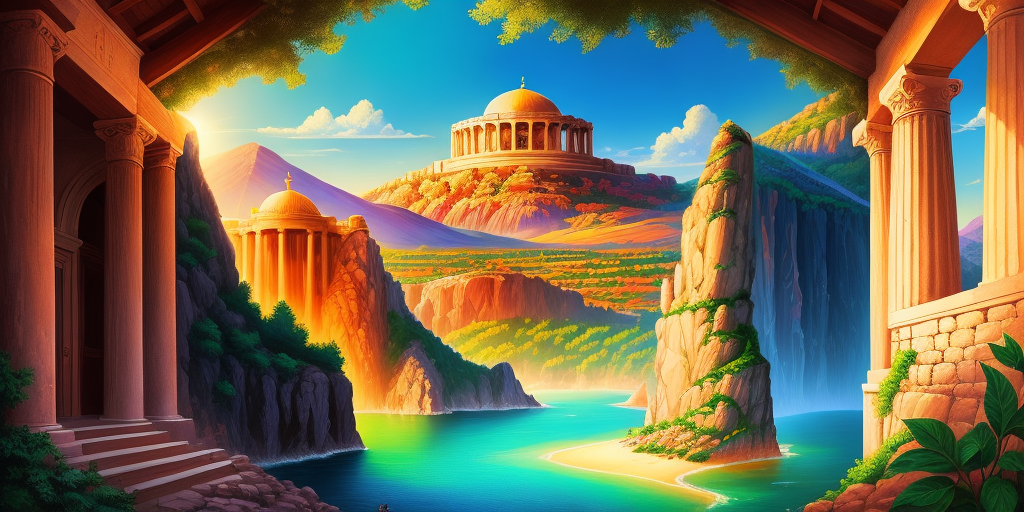
Exploring Greece: Unveiling Historical and Mythological Marvels
Greece, steeped in history and mythology, offers travelers a captivating journey through time. Beyond the well-known sites, there are intriguing historical and mythological considerations that add depth to your exploration. Here are some fascinating facts that may enrich your travels and reveal hidden gems of Greece’s past.
1. Oracle of Delphi – Navel of the World:
- Delphi, considered the center of the world in ancient Greek mythology, was home to the Oracle of Delphi. It was believed that the priestess, known as the Pythia, channeled the god Apollo to provide prophetic guidance. The site is nestled on the slopes of Mount Parnassus.
2. Mycenae’s Cyclopean Walls:
- Mycenae, an ancient city in the Peloponnese, is renowned for its Cyclopean walls, massive structures built with stones so large that it was believed only Cyclops could have lifted them. The Lion Gate, the main entrance to the citadel, is an iconic example of Mycenaean architecture.
3. The Sacred Way at Eleusis:
- Eleusis, near Athens, was the site of the Eleusinian Mysteries, a secret religious initiation that promised initiates a better afterlife. The Sacred Way, the path leading to the sanctuary, was walked by thousands during the annual procession, creating a mystical atmosphere.
4. Tholos of Delphi – Mysterious Circular Structure:
- The Tholos of Delphi, also known as the Delphi Tholos, is a circular building with a conical roof. Its purpose remains a mystery, but it is believed to have been a sanctuary or a place for rituals. Its unique design adds an air of enigma to the archaeological site.
5. The Theater of Epidaurus – Acoustical Marvel:
- The ancient theater of Epidaurus, known for its exceptional acoustics, allows even the faintest whisper to be heard by the entire audience. The design of the theater, dedicated to the god of healing, Asclepius, is an architectural marvel that still captivates visitors.
6. The Hidden Palace of Knossos:
- Knossos, on the island of Crete, is home to the ancient Minoan palace of King Minos. The labyrinthine layout of Knossos and the myth of the Minotaur, a creature confined within the palace, add an element of intrigue to this archaeological treasure.
7. Mount Olympus – Home of the Gods:
- Mount Olympus, the highest mountain in Greece, was believed to be the dwelling place of the Twelve Olympian Gods in Greek mythology. Climbing the mountain offers not only breathtaking views but also a connection to the mythical realm of ancient deities.
8. Nafplio – First Capital of Modern Greece:
- Nafplio, a charming town with Venetian architecture, served as the first capital of the modern Greek state after gaining independence in the 19th century. Its picturesque streets, medieval fortress, and historical significance make it a must-visit destination.
9. Temple of Aphaia – Alignment with Other Temples:
- The Temple of Aphaia on the island of Aegina is known for its unique alignment with the Parthenon in Athens and the Temple of Poseidon at Sounion. The significance of this celestial alignment remains a subject of scholarly debate.
10. Dion – City of the Macedonian Gods:
Dion, located at the foot of Mount Olympus, was a sacred city dedicated to the worship of the Olympian gods, especially Zeus. Excavations have revealed theaters, sanctuaries, and ancient artifacts, offering a glimpse into the religious practices of the ancient Macedonians.
Conclusion:
As you traverse the landscapes of Greece, each step unveils layers of history and mythology. These lesser-known facts add nuance to your journey, inviting you to delve deeper into the stories and mysteries that have shaped this extraordinary land throughout the ages.


No Comment Found.